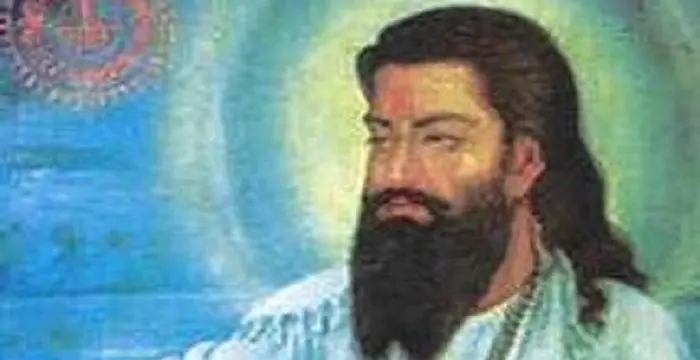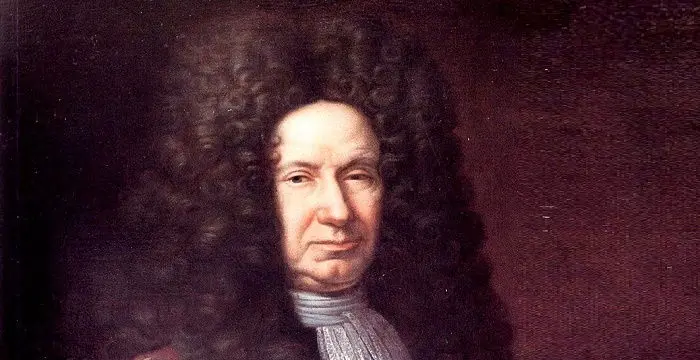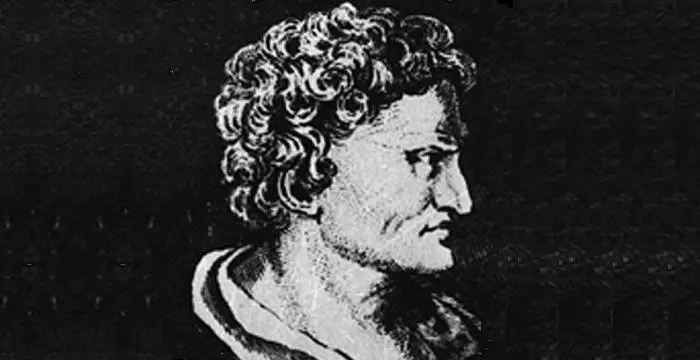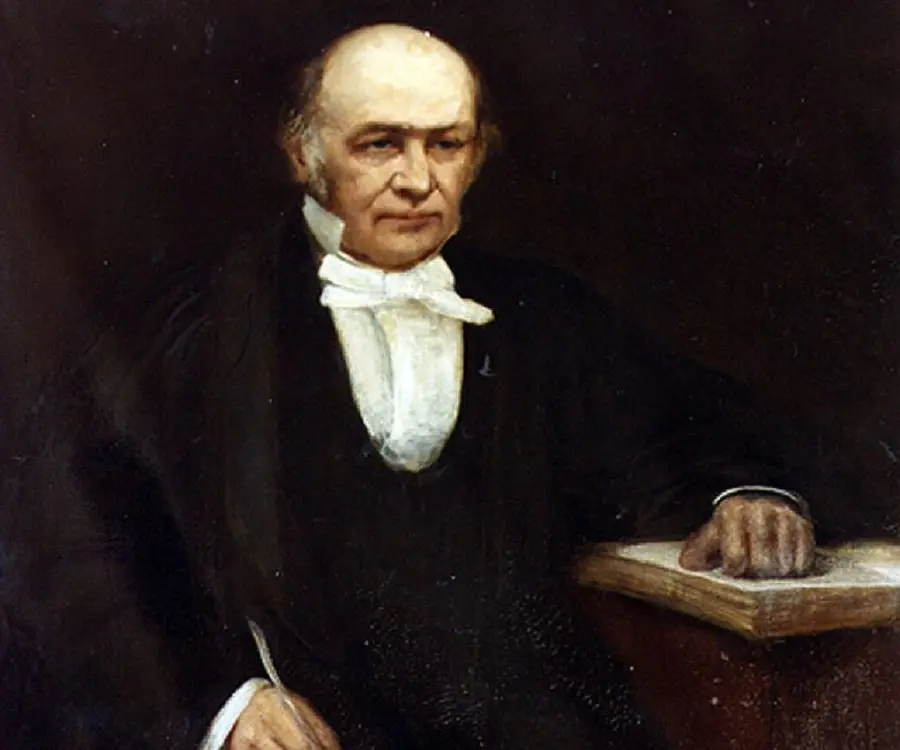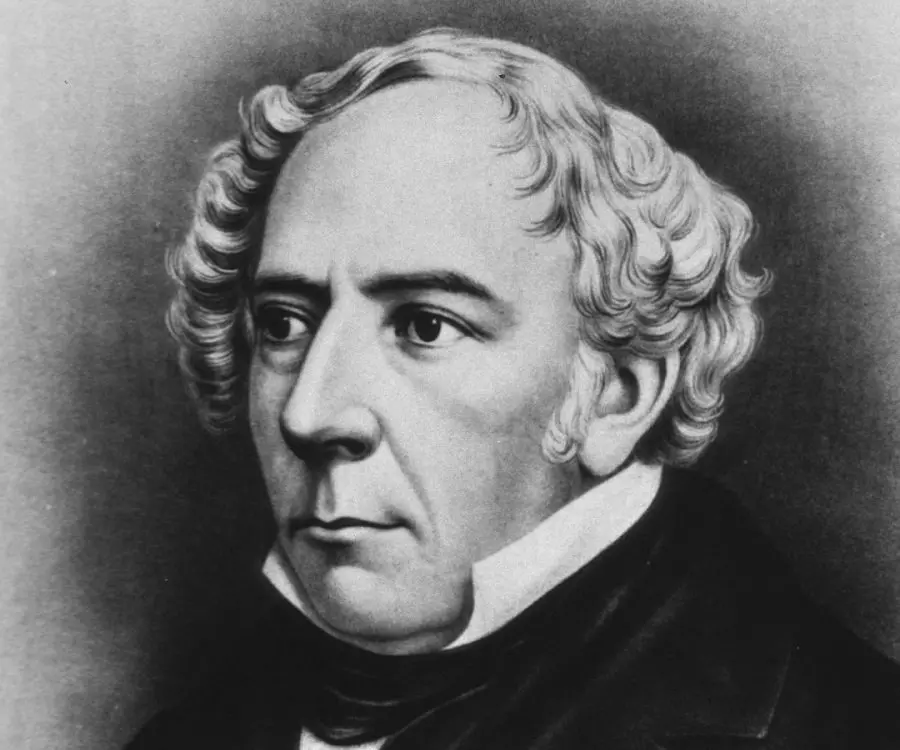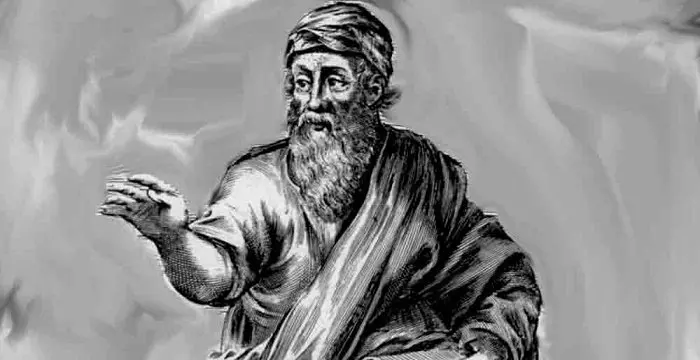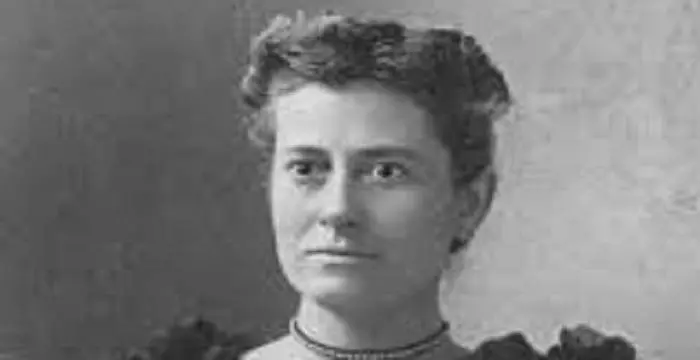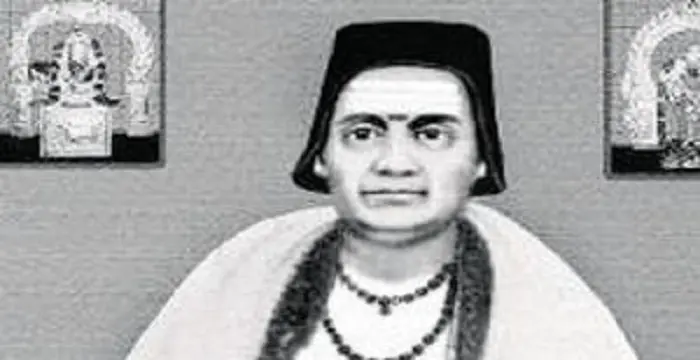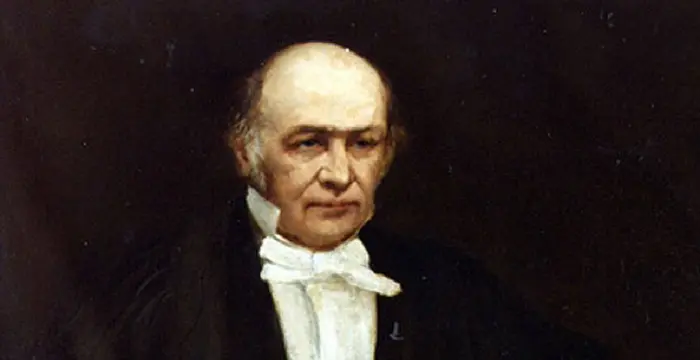
Sir William Rowan Hamilton - Mathematicians, Family and Personal Life
Sir William Rowan Hamilton's Personal Details
Sir William Rowan Hamilton was one of the greatest scientists to be born in Ireland
| Information | Detail |
|---|---|
| Birthday | August 4, 1805 |
| Died on | September 2, 1865 |
| Nationality | Irish |
| Famous | Trinity College, Dublin, Scientists, Mathematicians, Astronomers, Physicists, Astronomers, Mathematicians |
| Spouses | Helen Maria Bayly (m. 1833–1865) |
| Childrens | William Edwin Hamilton |
| Universities |
|
| Notable Alumnis |
|
| Discoveries / Inventions |
|
| Birth Place | Dublin, Republic of Ireland |
| Gender | Male |
| Father | Archibald Hamilton |
| Sun Sign | Leo |
| Born in | Dublin, Republic of Ireland |
| Famous as | Physicist, Astronomer and Mathematician |
| Died at Age | 60 |
// Famous Astronomers
Brahmagupta
Brahmagupta was a highly accomplished ancient Indian astronomer and mathematician. This biography of Brahmagupta provides detailed information about his childhood, life, achievements, works & timeline.
Giovanni Domenico Cassini
Giovanni Cassini was a 17th century Italian mathematician, astronomer and astrologer. This biography of Giovanni Cassini provides detailed information about his childhood, life, achievements, works & timeline.
Hipparchus
Hipparchus was a Greek astronomer and mathematician. This biography profiles his childhood, life, achievements and timeline.
Sir William Rowan Hamilton's photo
Who is Sir William Rowan Hamilton?
Sir William Rowan Hamilton was one of the greatest scientists to be born in Ireland. He was a linguist, a mathematician, an astronomer and a physicist all rolled into one and had contributed to a huge extent to the world of algebra, geometry, optics and dynamics. Many of the fundamental concepts used in quantum mechanics have been named ‘Hamiltonian’ in his honor. His most important discovery was the ‘algebra of quaternions’ which helped other scientists understand three-dimensional geometry.Curious and intelligent from an early age, young Hamilton’s genius was attributed more to his mother than his father. He spent most of his childhood with his uncle who taught him a large number of languages. He was also very good at mathematics and developed a great deal of expertise on differential calculus and analytical geometry. His work led to many developments in the modern study of quantum mechanics and electromagnetism.
// Famous Mathematicians
Brahmagupta
Brahmagupta was a highly accomplished ancient Indian astronomer and mathematician. This biography of Brahmagupta provides detailed information about his childhood, life, achievements, works & timeline.
Giovanni Domenico Cassini
Giovanni Cassini was a 17th century Italian mathematician, astronomer and astrologer. This biography of Giovanni Cassini provides detailed information about his childhood, life, achievements, works & timeline.
Pythagoras
Pythagoras of Samos was a Greek mathematician and philosopher. Read on to learn more about Pythagoras’s profile, childhood, life and timeline.
Childhood & Early Life
William Rowan Hamilton was born in Dublin, Ireland, on August 4, 1805.
His father was a solicitor named Archibald Hamilton and his mother was Sarah Hutton.
He was the fourth child of the nine children born into the family. When he was around two years old he was put under the care of his uncle Reverend James Hamilton who was an Anglican priest and a linguist.
By the age of three he had picked up the English language quite well and by five,he had learnt Hebrew and Greek. Under his uncle’s expert linguistic tutelage he also learnt Italian, German, Spanish and French many otherAsian languages such as Arabic, Sanskrit, Persian, Hindustani and also Malay.
At the age of ten he came across some mathematical papers written in Latin by the Greek mathematician named Euclid, the father of geometry, who lived in 300 B.C. He read Euclid’s works and developed a taste for geometry.
At the age of twelve, he met Zerah Colburn, the mathematical genius from America, who had come to Ireland on a tour. He competed with Colburn in solving problems in mental arithmetic but lost out to him finally. His loss to Colburn increased his interest in mathematics.
He studied a book titled ‘Algebra’ written in French by Clairaut when he was thirteen years old.
By the age of seventeen he had mastered Isaac Newton’s ‘Arithmetica Universalis’ and ‘Principia’ and also Pierre Laplace’s ‘Mecanique Celeste’.
In 1822 when he was only seventeen years old, Hamilton found a discrepancy in the ‘Mecanique Celeste’ written by Laplace and brought it to the attention of Dr. John Brinkley who was the first Royal Astronomer of Ireland and a professor of astronomy at the ‘Trinity College’ in Dublin. The professor praised him for finding the flaw in Laplace’s deductions.
In the same year he also wrote a paper which described how certain curvescould have a common tangent at the point where their curves met and submitted it to the professor.
He joined the school of mathematics at the ‘Trinity College’ in Dublin in 1823 at the age of eighteen and distinguished himself by coming first in all subjects in every examination.
Coming into the Limelight
Sir William Rowan Hamilton submitted a paper on ‘caustics’ to the ‘Royal Irish Academy’ in 1824.
In 1827 the committee involved in judging the paper for its authenticity and merit requested him to submit a more elaborate paper based on the paper he had submitted earlier. As a result he submitted a paper titled ‘Theory of Systems of Rays’ to the committee. It described how a mirror with a proper curvature could be used to focus a large number of orthogonal light rays into a single point.
This paper made him quite famous in the academic world even though he was still an undergraduate and he was appointed to the chair of professor of astronomy in the ‘University of Dublin’ in 1827 when he was barely twenty-two years old. He moved to the ‘Dunsink Observatory’ to take up residence there.
He spent the next seven years lecturing on different subjects of astronomy which held his audiences spellbound and became friends with many people including poets like William Wordsworth and Samuel Taylor Coleridge.
Making Great Discoveries
On October 16, 1843,Hamilton was walking with his wife on the banks of the Royal Canal in Dublin when he realized all of a sudden that the solution to three-dimensional geometry lay in quadruplets and not in triplets as it was thought earlier.
The same year he put forward the definition of the term ‘quaternions’ to the ‘Royal Irish Academy’ and started lecturing on the ‘algebra of quaternions’ from 1848.
In 1856 he studied the closed paths on the edges of ‘Platonic solids’ such as a dodecahedron which come to a vertex once only. These closed paths later on came to be known as ‘Hamiltonian circuits’ and the concept was called ‘Icosian Calculus’.
The Last Years
Sir William Rowan Hamilton spent the last twenty-two years of his life by continuing his studies on ‘Elements of Quaternions’ which he was able to complete just a few days before his death.
He also gave lectures on the subject of ‘quaternions’ for many years.
Major Works
Sir William Rowan Hamilton published two important papers in 1834 and 1835 that were based ‘On a General Methodin Dynamics’. The second paper contained the ‘Hamilton’s equations of motion’ of a dynamic system.
His most significant work is the book titled ‘Elements of Quaternions’ which was published posthumously in 1866.
Awards & Achievements
Sir William Rowan Hamilton was twice awarded the Cunningham Medal of the Royal Irish Academy (1834 and 1848).
He received his knighthood in 1835.
He was elected to the chair of the president of the ‘Royal Irish Academy’ in 1837 which he served till 1846.
In 1837 he was also made a member of the ‘Saint Petersburg Academy of Sciences’.
He was made a ‘Foreign Associate’ of the American ‘National Academy of Sciences’ just before his death in 1865.
He was also made a member of the ‘Royal Astronomical Society’.
Personal Life & Legacy
During his undergraduate days in college, William Rowan Hamilton got involved with three different women and ultimately married the third.
In 1824, he met Catherine who belonged to the Disney family he and his uncle were visiting in Summerhill and fell madly in love with her. He could not propose to her as he was still an undergraduate at ‘Trinity College’. He was deeply hurt when her mother announced in February 1825 that she had got married to a clergyman. He wanted to commit suicide due to his anguish and turned to poetry to get relief.
He met Ellen de Vere in July 1830 and wanted to marry her but she did not want to leave Curragh after marriage which discouraged him from pursuing the thought.
He eventually tied the knot on April 9, 1833 with Helen Maria Bayly, who lived on the other side of the field beside which the observatory was located. He had two sons named William Edwin and Archibald Henry and a daughter named Helen Eliza from this marriage.
Hamilton became an alcoholic and highly disorderly during the later stages of his life. He also suffered from gout and depression during this period andalso hada brain seizure on August 5, 1865.
Sir William Rowan Hamilton died at the age of sixty of a severe illness caused by gout in Dublin, Ireland on September 2, 1865.
In 2001 an institute for research on applied mathematics named ‘Hamilton Institute’ was founded in ‘NUI Maynooth’.
The year 2005 was celebrated as ‘Hamilton Year’ which was the 200th year of his birth and was dedicated to scientific study and research in Ireland. Since this was also the ‘Einstein Year’,it was designated as the ‘World Year of Physics’ by UNESCO.
The ‘Royal Irish Academy’ holds an annual ‘Hamilton Lecture’ which is attended by famous scientists from all over the world.
The ‘Central Bank of Ireland’ issued a commemorative coin in his honor.
A large number of objects and concepts of mechanics have been named after him.
// Famous Astronomers
Jabir Ibn Hayyan
Jabir Ibn Hayyan was a medieval era polymath. Check out this biography to know about his life, works and achievements.
Isaac Newton
Isaac Newton was an English scientist and mathematician, who discovered gravitation and Newtonian Mechanics. Read this biography to find more on his life.
Henrietta Swan Leavitt
Henrietta Swan Leavitt was an American astronomer. Check out this biography to know about her childhood, family, personal life, discoveries, achievements, etc.
Sir William Rowan Hamilton biography timelines
- // 300 BCAt the age of ten he came across some mathematical papers written in Latin by the Greek mathematician named Euclid, the father of geometry, who lived in 300 B.C. He read Euclid’s works and developed a taste for geometry.
- // 4th Aug 1805William Rowan Hamilton was born in Dublin, Ireland, on August 4, 1805.
- // 1822In 1822 when he was only seventeen years old, Hamilton found a discrepancy in the ‘Mecanique Celeste’ written by Laplace and brought it to the attention of Dr. John Brinkley who was the first Royal Astronomer of Ireland and a professor of astronomy at the ‘Trinity College’ in Dublin. The professor praised him for finding the flaw in Laplace’s deductions.
- // 1823He joined the school of mathematics at the ‘Trinity College’ in Dublin in 1823 at the age of eighteen and distinguished himself by coming first in all subjects in every examination.
- // 1824Sir William Rowan Hamilton submitted a paper on ‘caustics’ to the ‘Royal Irish Academy’ in 1824.
- // 1824In 1824, he met Catherine who belonged to the Disney family he and his uncle were visiting in Summerhill and fell madly in love with her. He could not propose to her as he was still an undergraduate at ‘Trinity College’. He was deeply hurt when her mother announced in February 1825 that she had got married to a clergyman. He wanted to commit suicide due to his anguish and turned to poetry to get relief.
- // 1827In 1827 the committee involved in judging the paper for its authenticity and merit requested him to submit a more elaborate paper based on the paper he had submitted earlier. As a result he submitted a paper titled ‘Theory of Systems of Rays’ to the committee. It described how a mirror with a proper curvature could be used to focus a large number of orthogonal light rays into a single point.
- // 1827This paper made him quite famous in the academic world even though he was still an undergraduate and he was appointed to the chair of professor of astronomy in the ‘University of Dublin’ in 1827 when he was barely twenty-two years old. He moved to the ‘Dunsink Observatory’ to take up residence there.
- // 1830He met Ellen de Vere in July 1830 and wanted to marry her but she did not want to leave Curragh after marriage which discouraged him from pursuing the thought.
- // 9th Apr 1833He eventually tied the knot on April 9, 1833 with Helen Maria Bayly, who lived on the other side of the field beside which the observatory was located. He had two sons named William Edwin and Archibald Henry and a daughter named Helen Eliza from this marriage.
- // 1834 To 1835Sir William Rowan Hamilton published two important papers in 1834 and 1835 that were based ‘On a General Methodin Dynamics’. The second paper contained the ‘Hamilton’s equations of motion’ of a dynamic system.
- // 1834 To 1848Sir William Rowan Hamilton was twice awarded the Cunningham Medal of the Royal Irish Academy (1834 and 1848).
- // 1835He received his knighthood in 1835.
- // 1837 To 1846He was elected to the chair of the president of the ‘Royal Irish Academy’ in 1837 which he served till 1846.
- // 1837In 1837 he was also made a member of the ‘Saint Petersburg Academy of Sciences’.
- // 16th Oct 1843On October 16, 1843,Hamilton was walking with his wife on the banks of the Royal Canal in Dublin when he realized all of a sudden that the solution to three-dimensional geometry lay in quadruplets and not in triplets as it was thought earlier.
- // 1848The same year he put forward the definition of the term ‘quaternions’ to the ‘Royal Irish Academy’ and started lecturing on the ‘algebra of quaternions’ from 1848.
- // 1856In 1856 he studied the closed paths on the edges of ‘Platonic solids’ such as a dodecahedron which come to a vertex once only. These closed paths later on came to be known as ‘Hamiltonian circuits’ and the concept was called ‘Icosian Calculus’.
- // 1865He was made a ‘Foreign Associate’ of the American ‘National Academy of Sciences’ just before his death in 1865.
- // 5th Aug 1865Hamilton became an alcoholic and highly disorderly during the later stages of his life. He also suffered from gout and depression during this period andalso hada brain seizure on August 5, 1865.
- // 2nd Sep 1865Sir William Rowan Hamilton died at the age of sixty of a severe illness caused by gout in Dublin, Ireland on September 2, 1865.
- // 1866His most significant work is the book titled ‘Elements of Quaternions’ which was published posthumously in 1866.
- // 2001In 2001 an institute for research on applied mathematics named ‘Hamilton Institute’ was founded in ‘NUI Maynooth’.
- // 2005The year 2005 was celebrated as ‘Hamilton Year’ which was the 200th year of his birth and was dedicated to scientific study and research in Ireland. Since this was also the ‘Einstein Year’,it was designated as the ‘World Year of Physics’ by UNESCO.
// Famous Mathematicians
Grigori Perelman
Grigori Perelman is a Russian mathematician who is best known for his contributions to Riemannian geometry and geometric topology. Check out this biography to know about his childhood, family life, achievements and fun facts about him.
Terence Tao
Terence Tao is an Australian- American mathematician who has contributed enormously to the field of mathematics. Check out this biography to know about his childhood, family life and achievements.
Isaac Newton
Isaac Newton was an English scientist and mathematician, who discovered gravitation and Newtonian Mechanics. Read this biography to find more on his life.
Brahmagupta
Brahmagupta was a highly accomplished ancient Indian astronomer and mathematician. This biography of Brahmagupta provides detailed information about his childhood, life, achievements, works & timeline.
Giovanni Domenico Cassini
Giovanni Cassini was a 17th century Italian mathematician, astronomer and astrologer. This biography of Giovanni Cassini provides detailed information about his childhood, life, achievements, works & timeline.
Bhāskara II
Bhaskara II was a 12th century Indian mathematician. This biography of Bhaskara II provides detailed information about his childhood, life, achievements, works & timeline.
Sir William Rowan Hamilton's FAQ
What is Sir William Rowan Hamilton birthday?
Sir William Rowan Hamilton was born at 1805-08-04
When was Sir William Rowan Hamilton died?
Sir William Rowan Hamilton was died at 1865-09-02
Where was Sir William Rowan Hamilton died?
Sir William Rowan Hamilton was died in Dublin
Which age was Sir William Rowan Hamilton died?
Sir William Rowan Hamilton was died at age 60
Where is Sir William Rowan Hamilton's birth place?
Sir William Rowan Hamilton was born in Dublin, Republic of Ireland
What is Sir William Rowan Hamilton nationalities?
Sir William Rowan Hamilton's nationalities is Irish
Who is Sir William Rowan Hamilton spouses?
Sir William Rowan Hamilton's spouses is Helen Maria Bayly (m. 1833–1865)
Who is Sir William Rowan Hamilton childrens?
Sir William Rowan Hamilton's childrens is William Edwin Hamilton
What was Sir William Rowan Hamilton universities?
Sir William Rowan Hamilton studied at Trinity College Dublin, Trinity College, Dublin, Westminster School
What was Sir William Rowan Hamilton notable alumnis?
Sir William Rowan Hamilton's notable alumnis is Trinity College Dublin
What is Sir William Rowan Hamilton's inventions/discoveries?
Icosian Calculus, Quaternions was invented (or discovered) by Sir William Rowan Hamilton
Who is Sir William Rowan Hamilton's father?
Sir William Rowan Hamilton's father is Archibald Hamilton
What is Sir William Rowan Hamilton's sun sign?
Sir William Rowan Hamilton is Leo
How famous is Sir William Rowan Hamilton?
Sir William Rowan Hamilton is famouse as Physicist, Astronomer and Mathematician
